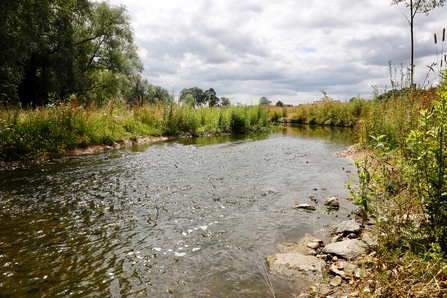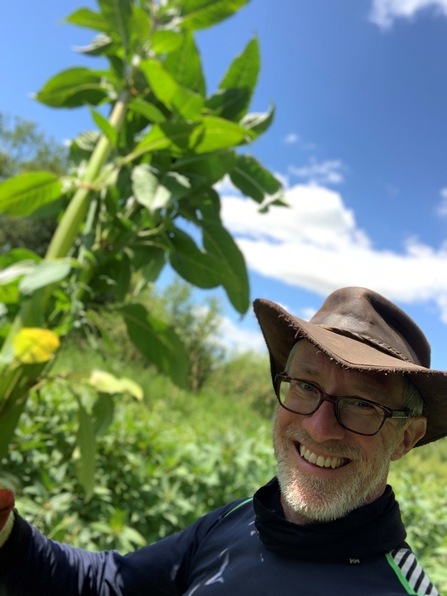Last month, Nicola Thompson joined the Trust as our new Rivers Officer (Citizen Science & Partnerships). Nicola is leading our national pilot for citizen science on chalk rivers and supporting our work as Catchment Host of the River Lea Partnerships. Here, Nicola shares more about that work and what it will involve.
Leading our national pilot for citizen science on chalk rivers
© Peter White

Nicola Thompson, Rivers Officer (Citizen Science & Partnerships).
England’s rivers are in a bad way, with chemical contamination to all rivers and only 14% achieving “good” status. Although some monitoring has been carried out, time and resources have limited the amount and spread of the monitoring effort. Many different factors are affecting the quality of habitat, including invasive non-native species such as Himalayan Balsam and Giant Hogweed, which smother native flora, and Signal Crayfish and American Mink which outcompete and eat our native fauna. Over-abstraction, pollution due to sewage works and run off from roads and fields combined with silt due to erosion of banks all contribute to a poor situation for our rivers.
The Catchment Systems Thinking Cooperative (CaSTCo) is a project involving over 30 partner organisations, including water companies, the Environment Agency, Environmental NGO’s and universities in England and Wales. The aim of the three-year project is to connect local people to their rivers through citizen science, whilst expanding data collection methods and increasing access to the information. Ten demonstrator catchments (demo’s) are working collaboratively on site-specific monitoring and improvement plans on their rivers. The results of the demo’s will be analysed and successful methods will be used to collaboratively create a standardised national framework of environmental data collection and analysis, with an evidence-led focus, enabling a roll out across all rivers.

© Peter White
The Trust is working in partnership with Affinity Water, the Environment Agency and the local volunteer group the River Beane Restoration Association (RBRA) on the River Beane – a chalk river which flows from Walkern, near Stevenage, to Hertford where it joins the River Lea. Chalk rivers are especially unique, as in good health they are biodiversity hotspots, containing a wealth of species dependent on the cool nutrient-rich water.
We will be working with existing volunteers and recruiting new people to become citizen scientists, building on river surveying monitoring methods already being used to try and understand the main issues affecting the River Beane and its catchment. The monitoring plan is still being finalised, but it is likely to include expanding the current riverfly monitoring programme, mapping and monitoring outfalls from road networks and misconnected homes, and recording nutrient levels.
Citizen science can enable larger and more regular monitoring activities which can complement existing monitoring methods. The results of standardised data collection will enable comparison across time, allowing trends to be seen and the result of any works to be analysed, with restoration programmes targeted in each catchment to gain the greatest benefit for our precious rivers.

Peter White volunteer River Champion and Chair of the RBRA
Peter White is a volunteer River Champion and Chair of the RBRA. Speaking about the practical ways the organisation’s volunteers will contribute to the citizen science project, Peter said:
“The great thing about the RBRA’s volunteers – local people with an interest in their local river – is that they’re all keen to do something to make the Beane great again. Many don’t have scientific backgrounds, but they do have enquiring minds. By growing our existing team of riverfly monitors we’ll get a more complete picture of the health of the river and be better able to pinpoint future pollution issues. Having people who live nearby go out to see where silt or road run-off gets into the river after it’s rained gives another important set of statistics, which is not recorded currently. This can be done just by standing on a bridge or the bank and noting where the dirty waters come from. While leaving the full-on laboratory stuff to the EA and water companies, our volunteers can fill in the gaps in the data more frequently. It’s a win-win for everyone, including the river.”
This is just one of the ways, the Trust is contributing to improving the quality of our local rivers. Find out more about some of our recent river restoration projects in our blog celebrating River’s Week here. You can also learn more about how Peter has contributed to the health of our rivers by reading his guest blog ‘A day in the life of a River Champion’. If this inspires you to get involved in looking after your local river, please check out the Living Rivers Volunteers Opportunities page on our website.

